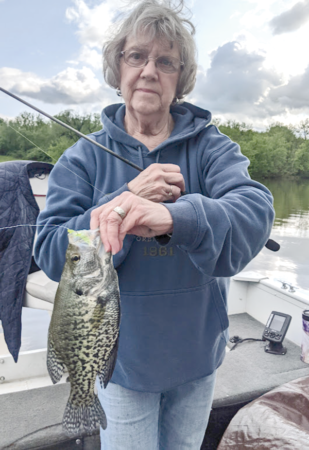How many times have you been around someone who said, “Yeah, we went fishing the other day, and we didn’t catch anything”? About that time, someone else will add, “Yeah, that’s why it’s called ‘fishing’ and not ‘catching.’”
Well, it’s certainly true that there are times when the fishing may not be going well, but the more you know about the business of fishing, the less likely you are to have those fishless days. This is especially important when you are trying to get someone new into the activity of fishing; success on the first outing is more likely to make them want to go back at it again.
Sure, there are a lot of factors that have to come together to make a successful outing, including weather, water conditions, equipment, techniques, and the species of fish you are after.
That last factor is probably one of the most critical when it comes to promoting a successful outing.
For that reason, I would tend to target panfish in the spring of the year — more specifically, crappies. I choose crappies because they are often abundant in lakes, and in the spring of the year, when they are focused on spawning activity, they can also be very cooperative.
Crappies are very predictable, and since you are dealing with lakes, for the most part, water conditions are more stable and less likely to be seriously affected by heavy rainfall like streams or rivers. Sure, I do my share of stream trout fishing in the spring, but I’m also putting my share of time into pursuing crappies.
Each spring, some friends and I spend a few days at “crappie camp”; no, the camp is just fine, and so is the crappie fishing.
One of the biggest factors for success is knowing when and where to find those crappies. Crappies move from their deep-water winter hangouts to shallow bays and especially bays or shorelines with cover like stumps and other woody stickups. Water from 3 to 10 feet can often be very productive.
My wife, Sheila, and I were out this past week on another lake targeting crappies, and as expected, we did well in the bays and along the shorelines with good structure. We caught good numbers of both black and white crappies, and on a number of occasions, we were both hooked onto fish at the same time.
Fortunately, crappies are usually very prolific and reproduce in high numbers, but even so, we are careful to limit what we take. In fact, before you just head off to a lake to catch crappies, I highly recommend you check on the panfish regulations since they can vary from lake to lake according to how many and what size they have to be.
Keep your crappie fishing gear fairly simple; ultralight open-faced spinning gear with four-pound test line is good. I prefer braided line since it has no give and therefore transmits the feel of a strike much better. I add about five feet of four-pound test of low-stretch fluorocarbon to the business end of my braided line.
There are a variety of baits that will take crappies. To be honest, the only time I use any kind of bait is in the dead of winter through a hole in the ice. One-sixteenth once jig heads with about an inch and a half of some type of soft plastic like a grub or tube are good choices. The choice of color varies; we like chartreuse, yellow, and even white in cloudy water, but at times, brown, black, green, and even pink or red can be productive. You can use a bobber, but we prefer to go without one. Cast the rig and keep your rod tip up and a tight line so you can detect any strikes as the lure drops. If I don’t have a hit on the drop, I bring the lure back with some short hops as I reel. This technique allows you to explore different depths until you find a school or a willing taker.
If you want to go “catching” and not just “fishing,” there’s a good chance some crappie fishing is the answer.




